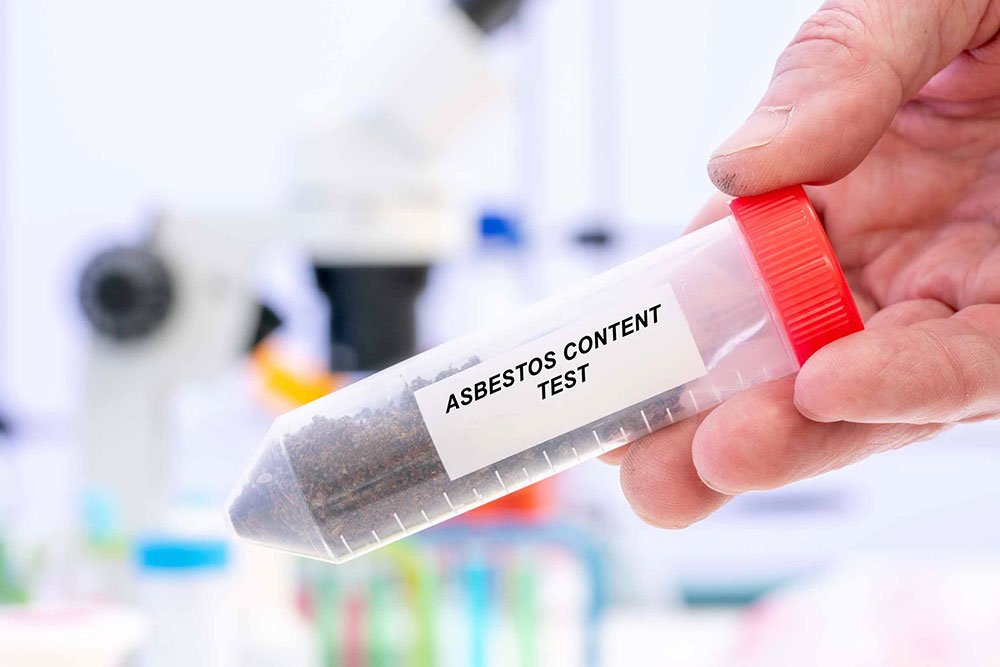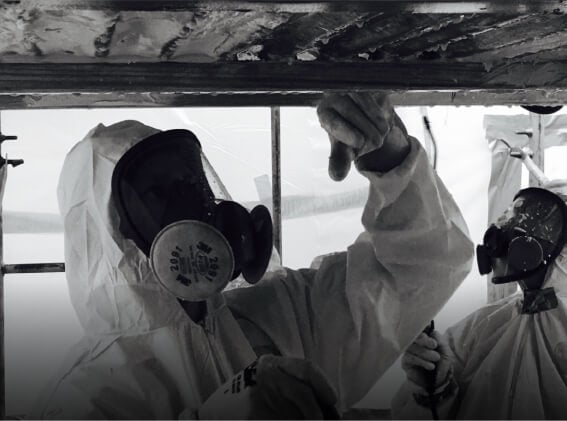Asbestos Testing: Crucial Actions for a Safe Living Environment
Wiki Article
The Complete Process of Accredited Asbestos Checking to Ensure Building Conformity
In the realm of residential property management and compliance, the procedure of approved asbestos testing stands as a vital element to make sure the security and wellness of passengers. Understanding the detailed steps included in this screening method is paramount for homeowner and supervisors alike. From the initial assessment to the final interpretation of results, each phase plays a crucial role in establishing the existence of asbestos within a property. Allow's discover how this meticulous procedure unravels to guarantee adherence to strict guidelines and guard against potential health and wellness threats.Accredited Asbestos Testing: First Evaluation
In carrying out the initial assessment for accredited asbestos screening, a thorough assessment of the residential property's products is vital to accurately recognize possible asbestos-containing materials. Special interest is given to materials that are prone to damage or disruption, as these circumstances can release dangerous asbestos fibers right into the air.Certified asbestos assessors comply with stringent procedures established by regulatory bodies to ensure the precision and dependability of the screening procedure. By thoroughly recording findings and using advanced screening techniques, assessors can provide building owners with a thorough record outlining the presence of asbestos, if any, and the recommended actions for reduction or elimination. This first evaluation sets the structure for subsequent activities to deal with asbestos concerns and ensure the security and compliance of the residential property.
Example Collection Treatments for Asbestos Examining
Reliable example collection treatments are vital in ensuring exact asbestos screening outcomes and compliance with regulatory requirements. When accumulating samples for asbestos screening, it is essential to comply with stringent methods to minimize the risk of contamination and guarantee the dependability of the results.
First of all, it is essential to identify the suspected asbestos-containing products (ACMs) and focus on sampling locations based upon aspects such as the material's problem, ease of access, and possibility for disturbance. Asbestos Testing. Examples need to be gathered from various places within the residential property to give a comprehensive analysis of asbestos visibility
During example collection, accredited professionals should use suitable personal protective tools (PPE) to guard versus asbestos direct exposure. They need to make use of clean devices, such as disposable gloves and plastic sheeting, to avoid cross-contamination in between samples. Samples need to be thoroughly accumulated utilizing a specified strategy, such as wet cleaning or coring, and firmly sealed in impermeable containers to maintain their integrity review during transport to the research laboratory for evaluation.
Laboratory Evaluation Process for Asbestos Examples
Upon completion of the example collection process, the asbestos examples are carefully carried to accredited labs for careful evaluation. The initial action in the lab analysis process is sample preparation, where the gathered examples are carefully processed to draw out the asbestos fibers.
As soon as the analysis is full, a comprehensive report is produced, detailing the searchings for and verifying whether asbestos exists, the sort of asbestos fibers identified, and the focus levels. This info is critical for homeowner to take the essential actions to make certain compliance with asbestos policies and secure the health and wellness of residents.

Reporting and Interpretation of Asbestos Examination Outcomes
Certified asbestos screening laboratories provide thorough records that supply critical insights into the presence, type, and focus degrees of asbestos fibers found in samples accumulated from residential properties. These records are essential for homeowner and managers to comprehend the danger positioned by asbestos and make informed decisions regarding its monitoring or removal. The records commonly consist of information on the approaches utilized for testing, the places from which samples were taken, the kind of asbestos determined (such as chrysotile, amosite, or crocidolite), and the concentration degrees of asbestos fibers discovered.Interpreting these results requires know-how to examine the prospective health and wellness threats connected with asbestos direct exposure, identify the suitable strategy, and make sure regulatory compliance (Asbestos Testing). Relying on the searchings for, recommendations may vary from proceeded tracking and upkeep to encapsulation or full asbestos reduction. Building proprietors ought to thoroughly assess these records and speak with asbestos experts to create a detailed prepare for attending to any asbestos issues recognized
Making Sure Building Conformity With Asbestos Regulations
To keep adherence with asbestos guidelines, residential property owners must diligently implement measures to make sure compliance with appropriate legislations and guidelines. This includes carrying out regular asbestos assessments by accredited experts to identify any kind of presence of asbestos-containing products within the residential or commercial property. As soon as asbestos is identified, homeowner should follow asbestos monitoring prepares that outline appropriate containment, removal, or encapsulation procedures to avoid direct exposure and spread of asbestos fibers. Compliance likewise includes keeping detailed documents of asbestos testing, upkeep, and removal tasks for evaluation objectives.Residential property owners should supply asbestos understanding training to staff members and occupants to reduce the risk of asbestos direct exposure and ensure correct handling of products that may have asbestos. Additionally, it is crucial to remain notified regarding any updates basics or modifications in asbestos regulations to adjust monitoring techniques accordingly. By proactively addressing asbestos conformity demands, homeowner can produce a safe environment for residents and minimize possible lawful and health and wellness dangers connected with asbestos direct exposure.
Final Thought
To conclude, certified asbestos screening is an essential procedure for making certain building compliance with regulations. The preliminary evaluation, example collection procedures, lab analysis, and interpretation of outcomes are very important action in this process. By adhering to these treatments, property proprietors can recognize and deal with any asbestos dangers present, protecting the health and wellness of occupants and keeping conformity with regulative requirements.Report this wiki page